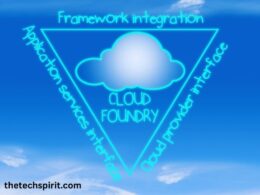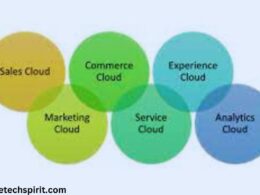Migrating to the hybrid cloud can be complex, but offers the flexibility to run apps in private and public clouds. This blog explores best practices for hybrid cloud migration.
Learn about assessing readiness, choosing workloads to migrate, security considerations, tools to simplify migration, integrating legacy systems, optimizing costs, and more. Get actionable tips to help plan and execute a successful migration to a hybrid environment.
Table of Contents
Understanding Hybrid Cloud and Its Benefits
A hybrid cloud brings together private cloud and public cloud environments to provide businesses with the best of both worlds. Companies can keep sensitive applications and data on-premises while leveraging scalable public cloud services. The result is an infrastructure that delivers flexibility, security, cost savings, and efficiency.
Defining Hybrid Cloud
A hybrid cloud environment contains interconnectivity between public and private clouds, allowing programs and data to be shared between them. Resources can be scaled flexibly across cloud models as per utilization and demand. The hybrid approach allows organizations to determine the right cloud environment for each application.
Advantages of Hybrid Cloud
The major strengths driving hybrid cloud adoption include:
- Flexibility: Organizations can transfer data and applications between public and private clouds depending on security, demand, and costs. This brings agility to scale resources.
- Cost Efficiency: Companies only pay for public cloud services used instead of having to maintain data centers for infrequent spikes in demand. The hybrid model allows balancing usage between clouds.
- Security: Businesses can host sensitive data and apps on private clouds while leveraging public clouds for general computing with encryption. This reduces surface attacks.
Use Cases Suited for Hybrid Cloud
The hybrid approach best fits business needs for:
- Data SECURITY: Financial services, healthcare companies, and enterprises with regulatory compliance relying on secure private cloud infrastructure can use the public cloud for temporary storage, backup, and test environments.
- Scalability: Applications with huge spikes such as e-commerce sites can scale seamlessly using the on-demand services of the public cloud by shifting seamlessly between deployment models.
- Disaster Recovery: Mission-critical systems can failover to the public cloud using hybrid cloud disaster recovery while private clouds provide general redundancy.
Preparing for a Hybrid Cloud Migration
Moving business systems to a hybrid environment requires systematic planning and strategic decisions:
Assessing Your Infrastructure
Audit existing infrastructure and analyze application dependencies, data flows, resource utilization patterns, and performance metrics. This allows planning migration phases and right-sizing cloud resources.

Setting Goals and Strategies
Define the outcomes, priorities, and strategies for migrating each system or workload including availability, scale, security, and integration requirements. Setting goals drives migration planning and cloud architecture decisions.
Building a Migration Team
Assemble a cross-functional team with application, infrastructure, and security experts along with cloud architects to assess workloads, create migration plans, and implement moves. Coordinate with departments on goals, timelines, and responsibilities.
Choosing Hybrid Cloud Providers
Research capabilities of cloud providers in meeting business needs while comparing costs. Evaluate vendor offerings on uptime history, data centers, security compliance, scalability options, and integration with on-premises infrastructure.
Migrating to a Hybrid Cloud
The migration process involves moving data, applications, networks, and management systems between public and private cloud environments:
Migrating Storage and Data
Lift-and-shift data to object storage services on public clouds or set hybrid data lakes allowing analytics using cloud tools. Ensure security, minimize latency, and prevent vendor lock-in via standards including REST APIs and ODBC.

Migrating Applications
Assess the suitability of shifting applications using PAAS for cloud-native apps or IAAS for lifting VMs into the public cloud by evaluating requirements on traffic, security, data flows, and integration complexity. Rewrite applications if needed.
Ensuring Network Connectivity
Set up Azure ExpressRoute or AWS Direct Connect for private connections to public clouds allowing secure and fast data transfers between environments. Use transit gateways and VPNs as alternatives for lower bandwidth needs.
Integrating Cloud Management
Use management tools like Azure Arc or AWS Outposts for seamless control of hybrid resources from a single dashboard instead of complex scripting across platforms. Evaluate costs, usage, system status, and security centrally.
Leveraging Cloud Services
Modernize application functionality by building server-less components in public clouds that integrate securely with legacy systems related to machine learning, IoT data processing, messaging, notifications, and file sharing. This brings innovation faster for high ROI.
Managing Your Hybrid Cloud
Proactively governing the hybrid environment optimizes utilization, compliance, data security and costs:
Monitoring and Optimization
Continuously tune application performance using APM tools across cloud models. Right-size resource allotments to balance speed and expenses by assessing metrics for usage peaks and idle wastage. Automate scaling configurations.
Data Security and Compliance
Enforce identity governance, access controls, encryption, and activity monitoring uniformly for hybrid cloud security. Ensure cloud provider certifications meet regulatory requirements including HIPAA, PCI DSS, and SOC 2 as needed.

Backup and Disaster Recovery
Implement robust data protection for hybrid cloud workloads using snapshots, incremental backups, and geo-redundant storage. Test failover across cloud data centers regularly meeting RTO/RPO targets for business continuity.
Controlling Costs
Use cloud spend analytics tools to identify waste and create budgets with alerts. Realize savings by purchasing reserved instances on the public cloud along with spot instances and auto-scaling groups to optimize variable workloads.
Key Takeaways on Hybrid Cloud Migration
Migrating business systems to a hybrid environment requires detailed planning on infrastructure goals, cloud platforms, migration tools, and management frameworks to realize the benefits of scalability, cost savings, and innovation capabilities. Assembling a cross-functional cloud team drives successful transformation.
Conclusion
The hybrid cloud model brings strategic advantages, allowing enterprises to innovate faster with public cloud agility while retaining control, security, and compliance. As cloud adoption accelerates, hybrid infrastructure has become crucial for managing modern workloads profitably.
FAQs
Does a hybrid cloud require rewriting existing applications?
Most legacy applications can migrate to infrastructure as a service (IaaS) without code changes using lift and shift techniques. Rewrites may be needed for optimally leveraging platform (PaaS) and serverless services.
How do you ensure connectivity between private and public clouds?
Dedicated private links like AWS Direct Connect and Azure ExpressRoute allow secure and high-speed connectivity between private data centers and public cloud environments.
What are the hybrid cloud security best practices?
Uniform identity governance, granular access controls, data encryption, and activity monitoring are crucial across private and public cloud components along with compliance audits and security certifications.
What are the cost optimization tips for hybrid cloud?
Analyzing usage data to right-size workloads, purchasing reserved instances, automating scalability, and using transient resources like spot VMs and server-less architectures curb expenses.
How to choose the right hybrid cloud providers?
Evaluate vendor offerings on integration capabilities with internal infrastructure, security compliance, uptime history, data sovereignty regulations, and global infrastructure supporting data residency needs.









